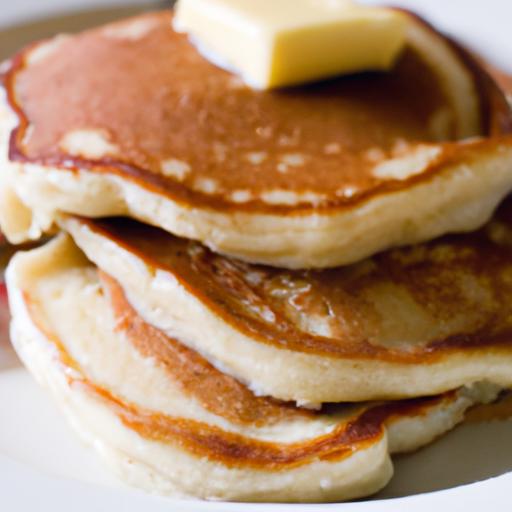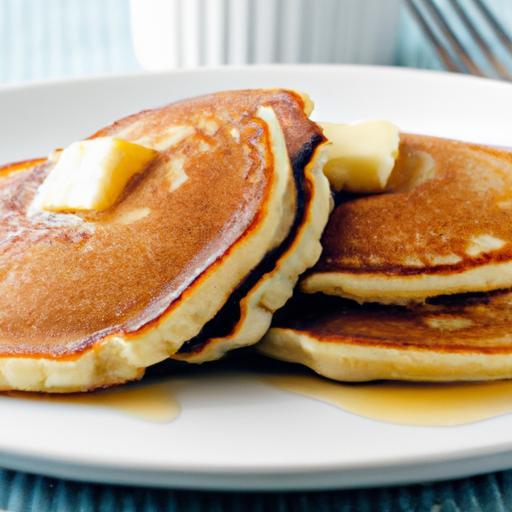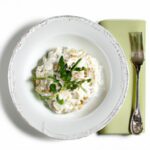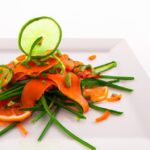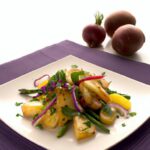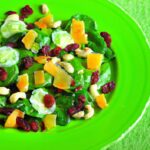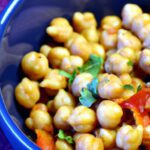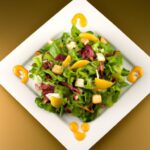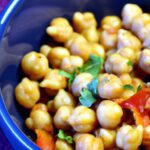There’s nothing quite like waking up to a stack of pancakes-warm, fluffy, and golden-drizzled with syrup and topped with fresh fruit. But for those navigating the world of gluten-free baking, capturing that perfect pancake texture can feel like an elusive dream. Enter the art of mastering gluten-free flour blends: the secret ingredient that transforms ordinary, crumbly batter into light, tender pancakes that rival their traditional counterparts. In this article, we’ll whisk you through the science and creativity behind fluffy gluten-free pancakes, unlocking tips and tricks to create your own custom GF flour blends that deliver breakfast bliss every time. Get ready to flip your pancake game and savor the gluten-free goodness like never before!
Fluffy Gluten-Free Pancakes begin with understanding the fascinating roles of various gluten-free flours – each bringing a unique texture and structure that mimics the lightness of wheat-based pancakes. From the nuttiness of almond flour to the delicate crumb provided by rice flour, these ingredients work synergistically to create that perfect airy stack.
The Science Behind Gluten-Free Flours and Their Unique Roles
Crafting the ideal blend means balancing flours that offer structure, moisture, and tenderness. For instance, tapioca starch adds chewiness and elasticity, while buckwheat flour contributes a subtle earthiness and rich color. The absence of gluten, a natural binder, means we rely on these combinations plus binding agents like xanthan gum to provide lift and cohesiveness, making your pancakes fluffier and less crumbly.
Crafting the Perfect Blend for Light and Airy Pancakes
To master fluffy gluten-free pancakes, blend equal parts of rice flour for mild flavor and tapioca starch for bounce. Add a smaller proportion of almond or oat flour to enhance moisture and promote browning. This trifecta ensures your pancakes are soft, pliable, and golden brown – while keeping them fully gluten-free.
Essential Tips for Mixing, Resting, and Cooking Fluffy Pancakes
Mix wet and dry ingredients separately before gently folding them together to avoid overworking the batter, which can toughen gluten-free flours. Let the batter rest for 10-15 minutes; this hydrates the flours and improves texture. Use a non-stick or cast-iron skillet preheated to medium-low heat, cooking pancakes slowly to achieve that tender middle with a lightly crisp edge. Flip once bubbles form and edges set.
Flavor Boosters and Toppings to Elevate Your Gluten-Free Breakfast
Boost flavors naturally by incorporating vanilla extract, cinnamon, or zest of lemon or orange into your batter. Top your stack with fresh berries, a dollop of greek yogurt, pure maple syrup, or a sprinkle of toasted nuts for added crunch and visual appeal. A pat of melting butter or a drizzle of coconut cream can add indulgence without complicating the gluten-free focus.
Prep and Cook Time
Prep: 10 minutes | Cook: 15 minutes | Total: 25 minutes
Yield
Serves 4 (8 medium pancakes)
Difficulty Level
Easy to Medium
Ingredients
- 1/2 cup white rice flour, sifted
- 1/4 cup tapioca starch
- 1/4 cup almond flour
- 2 tablespoons coconut sugar
- 1 teaspoon baking powder
- 1/4 teaspoon xanthan gum
- 1/4 teaspoon sea salt
- 1 large egg, at room temperature
- 1 cup unsweetened almond milk (or preferred dairy-free milk)
- 2 tablespoons melted coconut oil or unsalted butter
- 1 teaspoon vanilla extract
Instructions
- Combine dry ingredients: In a large bowl, whisk together rice flour, tapioca starch, almond flour, coconut sugar, baking powder, xanthan gum, and salt until fully blended.
- Mix wet ingredients: In a separate bowl, beat the egg, then whisk in almond milk, melted coconut oil, and vanilla extract until smooth and silky.
- Incorporate wet with dry: Pour wet mixture into dry ingredients and gently fold with a spatula until just combined and no large dry pockets remain. Avoid overmixing to keep pancakes tender.
- Rest the batter: Let the batter sit at room temperature for 10-15 minutes. This allows the gluten-free flours to hydrate fully and makes for fluffier pancakes.
- Preheat pan and cook: Heat a non-stick skillet or cast iron over medium-low heat. Lightly grease if necessary. Pour 1/4 cup batter per pancake onto the pan, cooking until bubbles appear and edges set, about 2-3 minutes.
- Flip and finish: Flip carefully and cook the other side for another 1-2 minutes until golden and cooked through.
- Serve warm: Stack pancakes and garnish as desired for an irresistible breakfast.
Tips for Success
- For fluffier texture, separate the egg and whip the egg whites until stiff peaks form, then fold gently into batter.
- If batter thickens after resting, add a splash of almond milk to loosen consistency.
- Xanthan gum is optional but highly recommended to improve structure and binding.
- Make-ahead tip: Prepare batter the night before; refrigerate and stir gently before cooking.
- Gluten-free flour blends vary; test your chosen mix for best performance and adjust liquid ratios as needed.
Serving Suggestions
Serve your fluffy gluten-free pancakes with fresh seasonal fruit, such as sliced strawberries, blueberries, or banana. Add a drizzle of pure maple syrup for that classic sweetness or a spread of almond butter for extra richness. For a refreshing twist, top with a dollop of coconut yogurt and sprinkle toasted coconut flakes. Garnish with a few mint leaves to elevate presentation and aroma.

Nutritional Information Per Serving
| Calories | Protein | Carbohydrates | Fat |
|---|---|---|---|
| 220 kcal | 6 g | 28 g | 9 g |
Explore more about gluten-free baking techniques in our complete guide to gluten-free baking and discover the science behind flour alternatives on The Celiac Disease Foundation.
Q&A
Q&A: Fluffy Gluten-Free Pancakes: Mastering GF Flour Blends
Q1: Why do gluten-free pancakes often turn out dense and flat?
A1: Gluten acts like the structural glue in traditional pancakes, trapping air and giving them that coveted fluffiness. Without gluten, pancake batter struggles to hold gas bubbles, leading to dense, flat results. Mastering gluten-free flour blends and proper leavening techniques is the secret to fluffy stacks.
Q2: What makes a great gluten-free flour blend for pancakes?
A2: A perfectly balanced gluten-free flour blend combines light, starchy flours (like tapioca or potato starch) with protein-rich flours (such as brown rice or sorghum) and a bit of something nutty or sweet like almond or oat flour. This blend mimics the texture and elasticity gluten provides, creating pancakes that rise beautifully and stay tender.
Q3: Can I use just one type of gluten-free flour for pancakes?
A3: While it’s tempting to grab a single flour for simplicity, single flours-like pure rice flour-can yield chalky or gritty pancakes. Combining flours balances flavors and textures, ensuring your pancakes aren’t just gluten-free, but delectably fluffy and moist.
Q4: How important are binders in gluten-free pancake recipes?
A4: Binders like xanthan gum, psyllium husk, or chia seeds replace gluten’s sticky, stretchy properties, helping batter hold together and trap air bubbles. Without binders, gluten-free pancakes risk crumbling apart. Choose a binder suited to your texture preference and dietary needs; even just one teaspoon can make a world of difference.
Q5: What’s the role of eggs in gluten-free pancake batter?
A5: Eggs act as both binder and leavening agent, enriching batter while contributing to structure. They help hold the flour blend together and support lift, which is particularly vital in gluten-free baking where structure is otherwise lacking. For vegan alternatives, flax or chia “eggs” can provide a similar function with a little finesse.
Q6: Any tips for flipping and cooking gluten-free pancakes?
A6: Patience is key! Gluten-free batters may take a little longer to set, so wait until the edges look dry and bubbles form on top before flipping. Use a light hand with the spatula to avoid breaking delicate pancakes. Cook on medium heat-not too hot-to prevent burning while ensuring the interior cooks through.
Q7: How can I add extra fluffiness without gluten?
A7: Beyond flour blends and eggs, add a teaspoon of baking powder plus a pinch of baking soda to your batter for extra lift. Whipping egg whites separately and folding them in gently can introduce airiness. Butternut squash or pumpkin puree can add moisture that keeps pancakes tender and airy.
Q8: Are gluten-free pancakes healthy?
A8: Gluten-free doesn’t automatically mean healthier, but it can mean more nutritious! Homemade blends with whole grain flours, nuts, and seeds bump up fiber and protein. Avoid pre-made mixes with lots of starch and sugar if you want pancakes that nourish as well as satisfy.
Q9: Can mastering GF flour blends improve other gluten-free baked goods?
A9: Absolutely! Once you understand how to balance starches, proteins, and binders for pancakes, you unlock the door to better muffins, quick breads, and even cakes. Each recipe may require tweaks, but the foundational knowledge of flour blends transforms gluten-free baking from guesswork to art.
Q10: What’s the best way to store and reheat GF pancakes?
A10: Let pancakes cool completely, then layer with parchment paper and store airtight in the fridge for up to 3 days or freeze for a month. Reheat gently in a toaster or oven to revive their fluffy charm-avoid microwaving as it can make them rubbery.
Mastering gluten-free flour blends is your golden ticket to pancakes that rise, fluff, and delight-no gluten required! Ready to flip your expectations upside down?
Final Thoughts
Mastering the art of fluffy gluten-free pancakes is more than just a morning treat-it’s a culinary adventure that transforms ordinary breakfast into a celebration of texture, flavor, and ingenuity. By understanding the nuances of gluten-free flour blends, you unlock the secret to pancakes that rise, fluff, and satisfy just like their traditional counterparts. So next time you whisk together that batter, remember: with the right mix, patience, and a touch of creativity, your gluten-free pancakes will never be anything less than spectacular. Happy flipping!